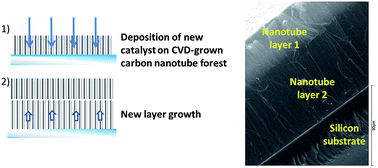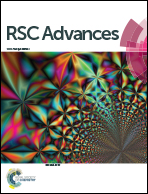Fabrication of three dimensional layered vertically aligned carbon nanotube structures and their potential applications
Abstract
This paper proposes a new technique for fabrication of vertically aligned carbon nanotube (VACNT) structures, controlled in shape, height and functionality, through continuous successive growth of VACNT layers by chemical vapour deposition (CVD) combined with patterning strategies. This was achieved by vacuum deposition of additional catalyst material onto the original VACNT “forest” layer. A second forest layer is then observed to grow underneath the first by CVD. It is proposed that the new catalyst material diffuses through the porous nanotube forest to coat the growth substrate underneath. The enhanced height, coating, and vertical alignment of the nanotube forests were verified by electron microscope observation. By repeating this process, aligned nanotube bi-layers and tri-layers were grown, producing a “stack” of nanotube layers. By using a “shadow mask” patterning technique to screen areas of the original forest from catalyst deposition, the growth can be confined to specific areas of the substrate. Potentially, these multilayer nanotube structures would have diverse applications as long composite reinforcements, p–n junctions for electronic devices, or to allow the production of near net shape complex multilayer nanotube structures.


 Please wait while we load your content...
Please wait while we load your content...